scent layering techniques
Scent Layering Techniques: Unveiling the Art of Aromatic Composition
Introduction
Welcome to an olfactory exploration like no other! In this comprehensive article, we delve into the fascinating world of scent layering techniques—a captivating art form that has captivated perfumers, aromatherapists, and consumers alike. Scent layering isn’t merely about creating a pleasant aroma; it’s a meticulous process of combining various scents to craft intricate, multi-dimensional fragrances. This technique allows for an extraordinary sensory experience, catering to our desire for unique and personalized aromas in various aspects of life, from perfumes and cosmetics to home fragrances and even therapeutic applications.
As we navigate this aromatic odyssey, you’ll discover how scent layering techniques have evolved over centuries, influenced global trends, and become a pivotal aspect of modern lifestyle and well-being practices. Get ready to unravel the secrets behind creating captivating scents that resonate with our emotions and enhance our daily rituals.
Understanding Scent Layering Techniques: Unraveling the Artistry
Definition: Scent layering techniques refer to the process of combining multiple aromatic compounds, known as notes, in a structured manner to create complex and nuanced fragrances. This art involves carefully arranging top, middle (heart), and base notes to produce a scent that evolves over time, creating depth and intrigue.
Core Components:
- Notes: Scents are categorized into three main groups:
- Top Notes: These are the initial scents we perceive when applying a fragrance. They are usually fresh, light, and volatile, evaporating quickly, making them ideal for opening with a vibrant burst of aroma. Common top notes include citrus, herbs, and light floral fragrances.
- Middle (Heart) Notes: The heart notes emerge as the top notes fade, forming the core of the fragrance. They contribute to the scent’s character, complexity, and longevity. Middle notes often include floral, fruity, spicy, or herbal scents.
- Base Notes: These are the deep, rich scents that anchor the fragrance and provide its lasting impression. Base notes tend to be warm, earthy, or woody, and they help blend and round out the scent profile.
- Composition: Skilled perfumers layer these notes in specific ratios, considering factors like evaporation rates, odour strength, and desired olfactory effect. The art lies in balancing each note so that one doesn’t overpower but complements the other, creating a harmonious and evolving scent journey.
Historical Context: Scent layering has an ancient history, dating back to the Egyptian and Greek civilizations, where aromatic resins and plant extracts were used in perfumes and medicinal preparations. Over time, this practice evolved into a sophisticated art form, especially during the Renaissance and the Industrial Revolution. The 19th century saw the establishment of perfumeries, and with them, a more structured approach to scent creation, laying the foundation for modern scent layering techniques.
Significance:
- Aesthetic Appeal: Scent layering allows for an incredible range of olfactory experiences, catering to diverse tastes and preferences. It enables the creation of unique scents that tell stories, evoke emotions, or simply provide a moment of pleasure.
- Personalization: With scent layering, individuals can design fragrances tailored to their personalities, occasions, or desired mood. This customization has made perfumes and cosmetics more accessible and appealing to modern consumers.
- Therapeutic Benefits: Aromatherapy, a practice rooted in scent layering, offers therapeutic benefits. Specific blends of essential oils have been shown to improve mood, reduce stress, enhance focus, and promote overall well-being.
Global Impact and Trends: A World Embracing Aromatic Composition
Scent layering techniques have left an indelible mark on the global fragrance industry and beyond. Here’s a glimpse into its international influence and shaping trends:
| Region | Impact and Trends |
|---|---|
| Europe | Europe, with its rich perfumery heritage, has been at the forefront of scent layering innovation. France, known as the heart of parfumerie, continues to set global standards. Recent trends include a move towards natural, organic ingredients and sustainable practices in the industry. |
| North America | The US market is characterized by a diverse range of preferences, with consumers demanding unique, personalized scents. Customizable fragrances and niche brands have gained popularity. Additionally, there’s a growing interest in cultural fusion scents, blending traditional notes from different regions. |
| Asia Pacific | This region, particularly China and Japan, has experienced tremendous growth in the fragrance industry. Scent layering techniques are being adapted to suit local preferences, with an emphasis on fresh, clean aromas and natural ingredients. The rise of K-beauty and Japanese skincare routines incorporates aromatic elements, reflecting a broader trend of integrating scent into daily rituals. |
| Middle East | Known for its opulent perfumes, the Middle East has a rich tradition of scent layering. Oud, amber, and rose are popular base notes in many traditional fragrances. Modern trends include the use of innovative ingredients and collaborations between local perfumers and international brands. |
Economic Considerations: The Business of Scent Creation
The economic landscape surrounding scent layering techniques is intricate and multifaceted, with various stakeholders and market dynamics at play.
- Market Dynamics: The global fragrance market, driven by scent layering, experienced a significant boost in the last decade, reaching a value of USD 167.3 billion in 2021 (Source: Grand View Research). This growth is attributed to rising disposable incomes, increasing consumer interest in personal care, and the growing trend of luxury goods consumption.
- Investment Patterns: Major players in the industry include established perfume houses like Chanel, Dior, and Yves Saint Laurent, along with niche brands and startups. These companies invest heavily in research and development, sourcing rare ingredients, and creating unique scent layers to gain a competitive edge.
- Economic Impact: The fragrance industry contributes significantly to various economies, supporting local businesses, farmers (especially those cultivating aromatic plants), and artisans involved in the production of perfumery materials. It also drives tourism through destination perfumes and cultural heritage sites associated with aromatic traditions.
Technological Advancements: Revolutionizing Scent Creation
Technology has played a pivotal role in transforming scent layering techniques, opening up new possibilities and enhancing traditional practices.
- Aromatic Compounds Database: Advanced databases cataloging aromatic compounds and their properties have revolutionized perfumery research. These resources enable perfumers to explore vast chemical libraries, discover novel ingredients, and predict scent profiles, thus speeding up the creative process.
- Computer-Assisted Composition (CAC): CAC tools use algorithms to simulate scent evolution over time, helping perfumers make informed decisions during composition. This technology predicts how notes will interact, allowing for faster experimentation and more precise layering.
- 3D Printing of Fragrances: 3D printing technology is being used to create custom fragrances layer by layer, offering unprecedented precision and the potential for personalized scents on demand. This innovation could revolutionize both mass production and niche perfumery.
- Sustainable Sourcing: With growing environmental concerns, tech-driven solutions are emerging to promote sustainable sourcing of aromatic materials. Blockchain technology is being explored to trace the origin of ingredients, ensuring ethical and eco-friendly practices within the supply chain.
Policy and Regulation: Navigating the Legal Landscape
The regulatory environment surrounding scent layering techniques is essential for consumer safety, product quality, and intellectual property protection.
- Cosmetics Regulations: Fragrances falling under the cosmetics category are subject to stringent regulations, ensuring their safety for direct skin application. The European Union’s Cosmetics Regulation (EC) No 1223/2009 sets standards for ingredient safety, labeling, and product testing.
- Fragrance Ingredient Regulations: Many countries have specific regulations for aromatic compounds, especially those derived from natural sources. These regulations cover issues like plant cultivation practices, harvesting standards, and processing methods to maintain the integrity of ingredients.
- Intellectual Property Protection: Scent layers can be patented, offering protection to perfumers and brands. This intellectual property rights framework encourages innovation and ensures that unique scent compositions are safeguarded against replication.
Challenges and Criticisms: Overcoming Obstacles
Despite its allure, the art of scent layering faces several challenges and criticisms, some of which include:
- Sensory Subjectivity: Scent perception is highly individual, making it challenging to create universal fragrances that appeal to all. The subjective nature of smell can lead to inconsistent consumer feedback.
- Allergies and Sensitivities: Certain aromatic compounds may cause allergies or sensitivities in some individuals. Creating safe, hypoallergenic fragrances while maintaining olfactory appeal remains a challenge.
- Ethical Concerns: The sourcing of ingredients, especially from rare or endangered species, has raised ethical questions. Ensuring sustainable and ethical practices throughout the supply chain is crucial for modern scent layering techniques.
Actionable Solutions:
- Develop personalized perfumery tools that account for individual olfactory preferences, offering more tailored fragrance experiences.
- Encourage research into natural, alternative ingredients to reduce potential allergenic risks and promote sustainability.
- Implement robust traceability systems within the supply chain to ensure ethical sourcing practices and protect vulnerable species.
Case Studies: Real-World Applications and Success Stories
Case Study 1: Tom Ford’s Black Orchid
Tom Ford’s iconic perfume, Black Orchid, is a masterpiece of scent layering. The fragrance combines rare and exotic notes like black orchid, tuberose, and patchouli to create an intense, sensual aroma. This case study exemplifies the power of combining unusual ingredients to craft a unique, memorable scent. Black Orchid’s success demonstrates how scent layering can elevate a perfume from a simple combination of notes to a cultural phenomenon.
Case Study 2: Aromaterapia for Mental Health
Aromatherapy, a practical application of scent layering, has been used in therapeutic settings to improve mental well-being. A study published in the Journal of Alternative and Complementary Medicine (2018) explored the effects of lavender and chamomile essential oils on anxiety levels. The research found that inhalation of these carefully layered aromatic compounds significantly reduced anxiety symptoms, highlighting the therapeutic potential of scent layering techniques.
Case Study 3: Customized Fragrances in Niche Market
Niche perfume brands like Creed have gained popularity by offering highly customized fragrances. Their ‘Personalized Perfumery’ service allows clients to work closely with perfumers to create unique scents tailored to their preferences. This approach showcases the art of scent layering as a personalized, exclusive experience, appealing to those seeking something truly one-of-a-kind.
Future Prospects: Embracing Emerging Trends and Opportunities
As we peer into the future of scent layering techniques, several growth areas and emerging trends come into focus:
- Personalized Fragrances: With advancements in technology and consumer demand for customization, personalized fragrances are set to gain mainstream popularity. Customers will have more control over scent composition, creating unique perfumes tailored to their tastes and occasions.
- Sustainable and Natural Ingredients: There is a growing demand for sustainable sourcing practices, leading to an increase in the use of natural ingredients. Innovations in biotechnology may offer synthetic alternatives that mimic natural scents, providing both sustainability and olfactory pleasure.
- Digital Perfumery: The integration of technology with scent creation will continue to evolve. Virtual reality (VR) and augmented reality (AR) experiences could revolutionize how consumers interact with fragrances, allowing them to ‘test’ scents virtually before purchasing.
- Cultural Fusion Fragrances: As global travel and cultural exchanges increase, fusion scents blending traditional notes from different regions will likely become more prevalent. These blends can offer a unique perspective on scent layering, appealing to adventurous consumers.
Conclusion: A World of Aromatic Possibilities
Scent layering techniques have come a long way since their ancient beginnings, evolving into a sophisticated art form that permeates various aspects of our lives. From perfumes and cosmetics to aromatherapy and home fragrances, this technique has captured the imaginations of creators and consumers alike. As we’ve explored throughout this article, scent layering offers endless possibilities for creativity, personalization, and sensory experience.
The future of scent layering looks bright, with technology, sustainability, and personalization at its forefront. As consumers become more discerning and environmentally conscious, perfumers will continue to rise to the challenge, delivering innovative scents that cater to diverse tastes while respecting the planet. The art of scent layering is not just a fragrance technique; it’s a journey into the heart of human senses, emotions, and cultural narratives.
FAQ Section: Answering Common Queries
Q: How do I know if a perfume has been well-layered?
A: A well-layered perfume exhibits a complex, multi-dimensional scent that evolves over time. It should have a clear opening, heart, and base notes, with each layer contributing something unique to the overall fragrance without overpowering others.
Q: Can I create my own scented layers at home?
A: Absolutely! DIY perfumery kits are available, offering a fun way to explore scent layering. However, for complex fragrances, seeking guidance from professional perfumers is recommended to ensure safety and achieve desirable olfactory results.
Q: Are natural ingredients always better for fragrances?
A: While natural ingredients have their allure, synthetic compounds can offer specific scents or properties not found in nature. The key is balance—using natural ingredients when possible while ensuring the final fragrance meets desired criteria.
Q: How do I choose a perfume with the right scent layer for me?
A: Consider your personal preferences, lifestyle, and occasions for which you’ll wear the perfume. Seek recommendations from perfumeries or experts, and remember that scent perception is highly individual, so trial and error might be necessary to find your perfect match.
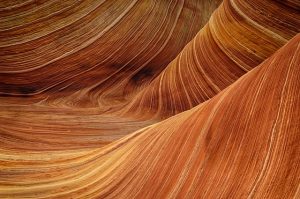
Master Perfume Layering: Create a Unique, Long-Lasting Scent – Free Guide!
Unleash your creativity and save significant amounts of money by mastering scent layering techniques.......
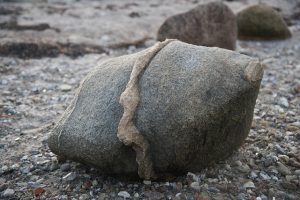
Elevate Your Scent Game: Master Perfume Layering Techniques for Lasting Luxury
Unleash your creativity and transform your fragrance routine with scent layering techniques—th.......

Unleash Your Signature Scent: Master Perfume Layering Techniques for a Fragrance Transformation
Unleash your inner elegance and transform your fragrance routine with our exclusive guide to scent l.......
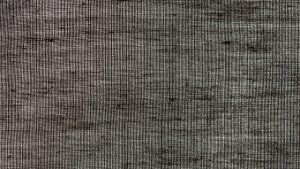
Master Scent Layering: Unveil Your Unique Fragrance Signature – Free Guide!
Unleash your creativity and transform your fragrance routine with our revolutionary scent layering t.......
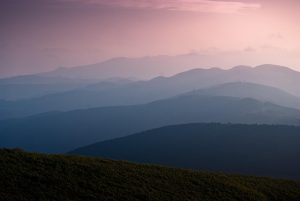
Unlock Your Unique Fragrance: Master Perfume Layering for a Luxurious Savings
Unleash your inner fragrance artist with our revolutionary guide to scent layering techniques. Creat.......
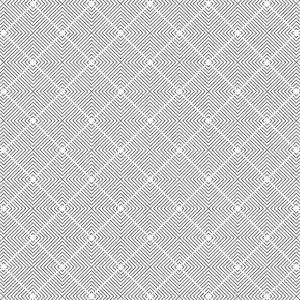
Unlock Your Signature Scent: Master Perfume Layering Techniques Now
Unleash your creativity and elevate your fragrance game with our revolutionary guide to scent layeri.......
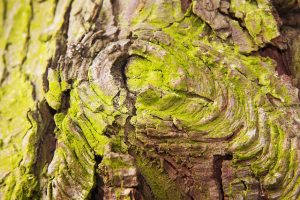
Master Scent Layering: Double Fragrance, Save Money – Unveil Your Unique Signature
Tired of overspending on perfumes that don't last or lack uniqueness? Scent layering techniques.......
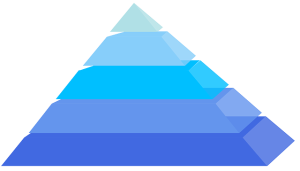
Unlock Fragrant Secrets: Master Perfume Layering, Save Money
Unleash your creativity and transform your fragrance collection with Master Scent Layering—a r.......

Master Scent Layering: Elevate Your Fragrance, Save Your Wallet
Unleash your passion for perfumes with our revolutionary scent layering techniques and perfume layer.......
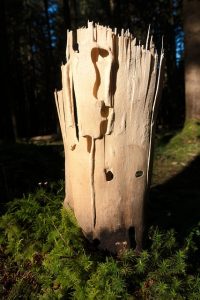
Unleash Your Fragrance Creativity: Master Scent Layering Techniques for Less
Unleash your creativity and elevate your style with our revolutionary scent layering techniques and.......